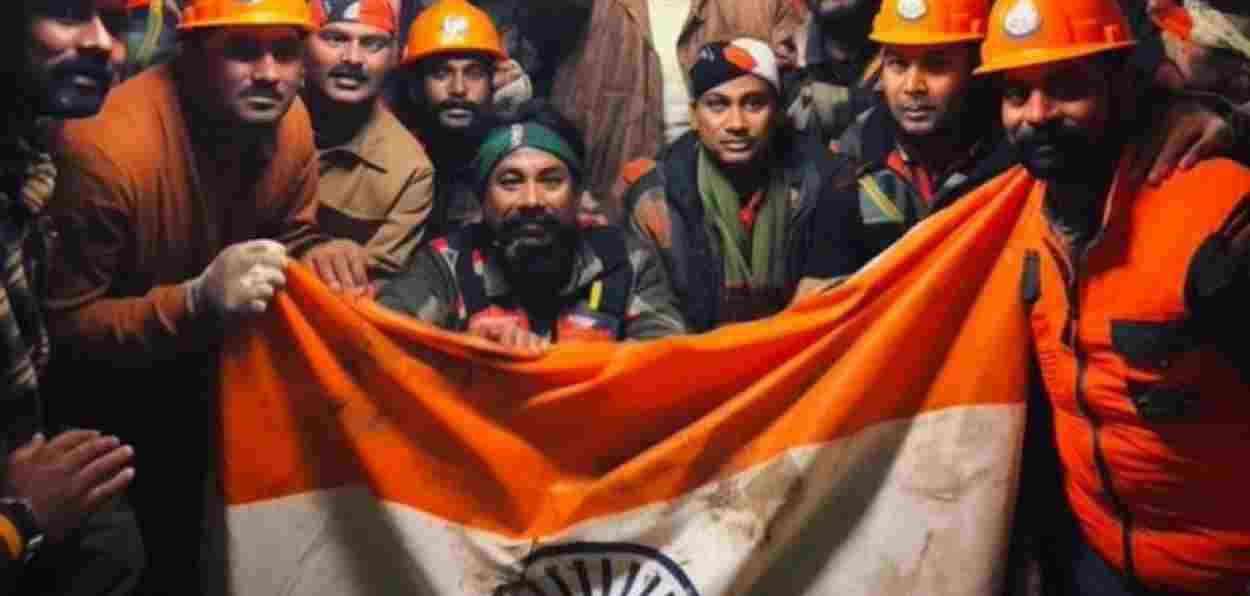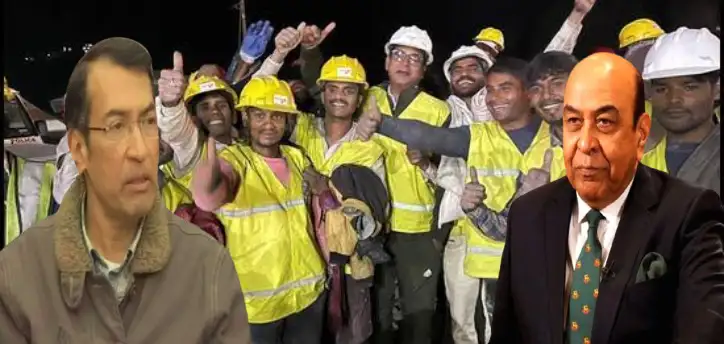
New Delhi
The miraculous rescue of 41 workers from the Himalayan Silkyara tunnel in the Uttar Kashi district of the Uttarakhand State was the triumph of a united India with officials from 33 departments, people of all faiths, and even foreigners working for 17 days round the clock to save fellow humans.
As against the belief that the workers trapped were locals they belonged to eight states of India and their families had been lodged in hotels and lodges by the government all these days of the rescue operation.
As the nation breathed a huge sigh of relief following the successful and safe rescue of 41 stranded workers Cyriac Joseph, the CEO of Squadron Infra Mining Pvt Ltd, which was majorly involved in the operation, said that it wasn't just a difficult mission but a 'war for humanity'.
Speaking to a media person after the workers were brought out safely from the tunnel at the end of a determined 16-day effort, Joseph said, "It was not just a difficult mission but war for humanity. We are glad to have been a part of it."
As General (retd) Syed Ata Hasnain, a member, of the National Disaster Management Authority (NDMA), who was the point person for disseminating the information on the operation to the nation and keep hopes alive said, “It was a herculean task involving 22 departments, ministries, authorities of the State and central government, individual officers like DM that led to the success of the mission. However, all this was possible because of the clear direction from the top.”

Mahmood Ahmed and Gen Syed Ata Hasnain
Hasnain, a decorated Indian Army General is well known for his work in Kashmir during the days of insurgency. He was instrumental in countering the propaganda of pro-Pakistani machinery and striking a positive relationship between the public and the Indian Army while keeping the onslaught against terrorists on.
General Hasnain became the face of the massive efforts involving men and machinery of the Silkyara tunnel as he helped to explain the hurdles and attempts to the countrymen in the simplest terms. Hasnain is also Chancellor of the Central University of Kashmir and is a well-known columnist, TV debate, and strategic expert who is involved in many national and international think tanks on national security and strategic affairs.
Another high-level person whose efforts made it possible for the teams to use trial and error methodology while navigating rescue operations is Mahmood Ahmed, Managing Director of National Highway Infrastructure Development Corporation Limited (NHIDC). Ahmed is Joint Secretary in the Ministry of Road Transport and Highways and holds the additional charge of the head of the NHIDC.
Mahmood Ahmed is a 1993 batch Indian Accounts and Finance Service officer who was camping at the site of the Silkyara temple for all 17 days. He was monitoring the situation round the clock and all the rescue planning and implementation was being done under his supervision.
National Highways Authority of India The National Highways Authority of India is an autonomous agency of the Government that was established in 1988. It is responsible for managing more than 50,000 km of the 1,15,000 km national highway network in India. It is a nodal agency of the Ministry of Road Transport and Highways.
When the final strike on the mountain was made by the now famous rat miners, it was Vakeel Hasan, who led the team. He led a team of six rat mining experts who did an incredible job of digging 12 meters horizontally in eight hours on November 28 to reach the minors somewhere around 7.05 pm.
.webp)
Rat hole miners team
Team member Muna Qureshi was the first to enter the tunnel through the hole.
Rat hole mining technique is often used by people in northeastern states especially Meghalaya to extract smaller amounts of coal from under the earth. It’s quite risky as many people have died in the process leading to the ban imposed on it by the supreme court,
However, the Meghalaya government has filed an appeal before the apex court to reverse the order.
Vakeel-led team are not rat miners but experts who came from Madhya Pradesh and Uttar Pradesh. Hasan, another member said “The work of the last 15 meters was very delicate. But nothing is difficult for us.”
Feroze alias Muna Qureshi proudly said, “It was our mission.” He told a media person as he stood with his fellow miners outside the tunnel. Their faces were covered in white dust. The 12-member team worked in two teams of three - one man would do the drilling the other collected the debris and the third was pushing it out of the pipe. They said they worked for more than 24 hours.
Munna Qureshi, the first to enter the tunnel said, "When I removed the last rock, I could see them. I went to the other side. They hugged us and lifted us. And thanked us for taking them out. We worked continuously for 24 hours. I cannot express my happiness. I have done it for my country."
Nasir Hussain, one of the six miners, said that when we removed the last debris and looked inside the tunnel, everyone's face was full of joy. When we entered the tunnel, we hugged them like they were family.
